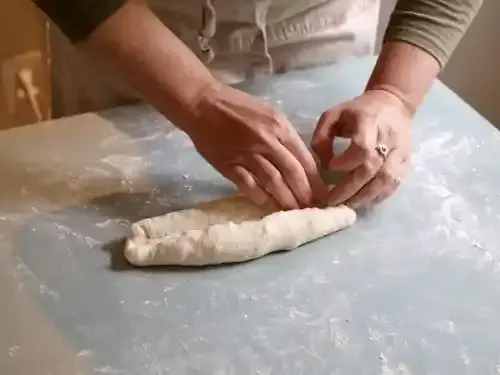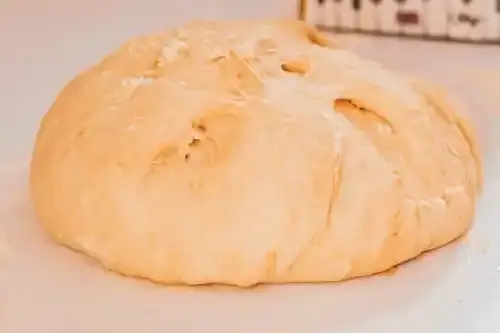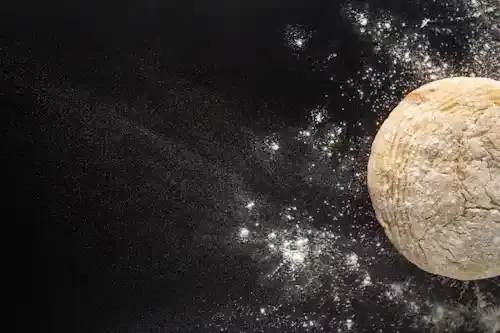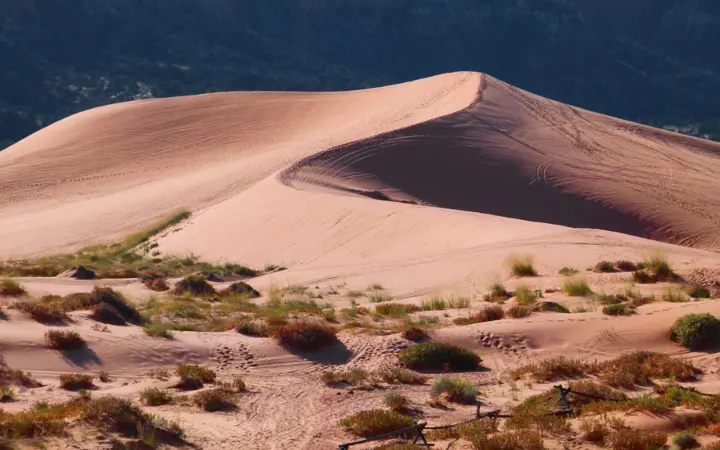The Rise of Civilization: How Bread Dough Shaped Human History
Bread is a staple food, consumed by cultures around the world for thousands of years. But bread is more than just a staple; it has played a pivotal role in the emergence of civilizations. The transformation of simple grains into bread dough, and its subsequent evolution into various forms of bread, affected agriculture, the economy, technology, and culture. This article explores the profound impact of bread dough on human civilization, tracing its journey from its origins to its future horizons.
Show key points
- The domestication of wild grains around 10,000 years ago marked the beginning of agriculture and the creation of early bread dough.
- Ancient civilizations like Egypt and Rome elevated bread dough into a symbol of divine favor and a political tool for control and unity.
- Diverse cultures adapted bread dough recipes using local ingredients and techniques, resulting in a wide variety of regional breads.
- ADVERTISEMENT
- Trade routes such as the Silk Road facilitated the cross-cultural exchange of dough recipes, grains, and fermentation methods.
- Scientific advancements during the Industrial Revolution revolutionized bread production through mechanization, better flour milling, and understanding of yeast.
- Today’s bread-making blends traditional methods with modern innovations, embracing health trends and global culinary creativity.
- As sustainability becomes crucial, future innovations in bread dough may include lab-grown proteins and eco-friendly fermentation technologies.
1. The emergence of bread dough: from wild grains to agriculture.

The story of bread dough begins with the domestication of wild grains, a process that marked the dawn of agriculture some 10,000 years ago. Early humans in the Fertile Crescent (Nature Syria) discovered that grains such as wheat and barley could be harvested, ground and mixed with water to form a basic paste. This dough, when left to ferment naturally, produced a primitive form of bread. The shift from a nomadic lifestyle to sedentary farming communities was largely driven by cereal cultivation, making bread dough one of the oldest processed foods and a cornerstone of early human diets.
Recommend
2. History of bread dough: from ancient Egypt to the Roman Empire.
Bread dough played an important role in ancient civilizations, especially in Egypt, where it was considered a gift from the gods. Egyptians were among the first to master the art of making bread, using yeast to ferment dough and creating a variety of breads. Bread became central to Egyptian life, as the state carefully controlled its production and distribution. The Romans also developed baking-making techniques, establishing large-scale bakeries that supplied bread to the urban population. Bread was so necessary that it became a political tool; Roman leaders often distributed bread for free to win public support, a practice known as "bread and circus.
3. Development of bread dough: techniques and ingredients.

With the spread of civilizations, so did knowledge and bread-making techniques. Different cultures have adapted the bread dough to their tastes and local ingredients. The introduction of new grains such as rye and corn led to the development of various types of bread. Innovations in grinding, such as the use of water and windmills, have also improved the quality and consistency of flour, which in turn has enabled enhanced the texture and flavor of the bread dough. Improved fermentation techniques, whether through natural primers or the addition of commercial yeast, allowed more control over the bread making process, resulting in a wide range of breads known today.
4. Bread dough across different civilizations: cultural exchange.
The dough of bread was not just a source of sustenance; it became a symbol of cultural identity. In Europe, medieval bread varied widely between regions, with coarse dark bread being the staple food of peasants, while wealthy people enjoyed fine white bread. In the Middle East, flatbreads such as pita bread have become an integral part of the diet, while in Asia, steamed and baked breads have evolved alongside rice-based staples. Trade routes such as the Silk Road facilitated the spread of bread dough across continents, as different cultures exchanged ingredients, recipes and baking techniques, enriching the world's culinary heritage.
5. Technological and scientific developments in bread dough.

The Industrial Revolution brought about significant changes in bread production. Mechanization allowed the mass production of bread, making it accessible to the urban working class. The invention of the roller mill in the nineteenth century revolutionized flour production, resulting in softer and more uniform flour which improved the quality of bread dough. The advent of cooling has also extended the life of the dough, while advances in microbiology have led to a better understanding of yeast and fermentation, paving the way for modern bread-making techniques. Today, scientific research continues to improve bread dough for a smoother texture, flavor and nutritional value.
6. Bread dough in modern times: the combination of tradition and creativity.
In the modern world, bread dough remains as important as ever, showing a balance between tradition and creativity. Artisan bakers continue to maintain old techniques, such as sourdough fermentation, while experimenting with new ingredients such as old cereals, gluten-free flour and plant-based proteins. The rise of homemade bread, especially during the COVID-19 pandemic, has led to renewed interest in bread making, as people explore different types of dough and bread patterns. At the same time, industrial bakeries are leveraging technology to create bread that meets modern requirements for comfort, health and sustainability.
7. The future of bread dough: sustainability and beyond.
Looking to the future, the future of bread dough lies in sustainability and innovation. As the world's population grows and environmental concerns grow, there is a trend towards more sustainable agricultural practices, such as regenerative agriculture, which can ensure a steady supply of high-quality grains. Advances in biotechnology may lead to the development of new types of yeast and fermentation processes that reduce the carbon footprint of bread production. In addition, exploring alternative ingredients, such as insect-based flour or lab-grown proteins, could revolutionize the way you think about bread dough. The future of bread dough is likely to see a combination of traditional practices and cutting-edge science, ensuring that this ancient food continues to nourish and bond people for generations to come.

From its humble beginnings as a simple blend of ground grains and water, bread dough has evolved into an essential ingredient in human civilization. Bread dough has not only provided food, but has also shaped economies, cultures and technological progress throughout history. As we look to the future, bread dough will continue to play a critical role in tackling global challenges, ensuring that this timeless food remains a symbol of human creativity and heritage. The bread dough journey is far from over, and its potential to impact the world is as strong as ever.
![]()
How to deal with difficult people and people with a capricious mood?
How to deal with difficult people and people with a capricious mood? more- ADVERTISEMENT
![]()
Is the Nile the longest river in the world? Amazon would like the word.
The Nile is the world’s longest river- The Amazon would like a word more- ADVERTISEMENT
![]()
Valuable life skills gained from mountaineering
Mountaineering is more than climbing; it’s a journey that builds resilience, self-reliance, and teamwork. It teaches us to accept failure, embrace challenges, and grow through every step. The real reward isn’t reaching the summit, but gaining the strength and wisdom needed to navigate life itself. more- ADVERTISEMENT
![]()
Alert from the Northern Lights: Sun's activity is at its highest level in 23 years with the Northern Lights
Alert from the Northern Lights: Sun's activity is at its highest level in 23 years with the Northern Lights more- ADVERTISEMENT
![]()
The Ultimate Swallowers: Exploring the Voracious Nature of Black Holes
Black holes are mysterious giants with immense gravity that swallow everything—even light—making them terrifying and fascinating. With their super-powerful pull and potential to distort space-time, they capture scientists’ and dreamers’ imaginations. Are they evil forces or just strange cosmic rules at play? The mystery continues to deepen. more- ADVERTISEMENT
![]()
The moon is moving away from the earth. Will our day become 25 hours?
The Moon is slowly drifting away from Earth, making our days longer over time. This cosmic dance, caused by tidal forces, began with a massive ancient collision and continues to shape Earth's rotation and life. Fossil records even show that days were once just 21.8 hours long. more- ADVERTISEMENT
![]()
Discover the Impossible: Turning Deserts into Dense Forests – Dream or Reality?
Desert greening turns dry, barren land into fertile areas using water-saving tech, solar and wind energy, and special soil treatments. One major project, the Sahara Forest Project, aims to fight drought and climate change while boosting local economies by transforming parts of the Sahara and Sahel into green spaces. more- ADVERTISEMENT
![]()
How to develop your self-confidence?: The journey of character building and self-development
Self-confidence is a powerful inner force that grows through experience, reflection, and personal development. It's not inherited but built over time. With positive thinking, healthy habits, and clear goals, anyone can strengthen their self-worth and face life with courage and resilience. more- ADVERTISEMENT
![]()
A book that may interest you: pistachio theory
A book that might interest you - Pistachio Theory more- ADVERTISEMENT
![]()
How the nearby supernova left its mark on life on Earth
SN 1181, a mysterious "guest star" seen in 1181, has finally been linked to a rare supernova type called IAX. It left behind a "zombie" white dwarf, puzzling astronomers for centuries. New computer models now align with telescope data, offering fresh insight into this unusual celestial explosion. more- ADVERTISEMENT





















